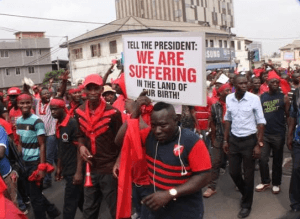COLA is relief to workers, but threat to government’s financial discipline – Economists

Some economists are warning that the payment of 15 per cent allowance to workers to cushion them amid the country’s current economic hardship is a threat to government’s fiscal targets.
The government expects an overall GDP growth of 5.8 per cent [5.4 per cent in 2021], inflation of 8.0 per cent [which stood at 29.8 per cent as of June 2022, year-on-year], and fiscal deficit of 7.9 per cent [9.4 per cent in 2021].
The economists explained that the payment of the Cost-of-Living-Allowance (COLA) would partially offset the loss in real income of workers, whose income had declined through inflationary pressures since the beginning of the year.
Nonetheless, it would push the government to spend more, as efforts to increase revenue with the introduction of the Electronic Transactions Levy (E-Levy) had been met with apathy by many Ghanaians.
Dr Patrick Asuming, a Development Economist, told the Ghana News Agency that with the payment of the 15 per cent temporal allowance to public service workers, the government’s expenses would increase.
He noted that: “It’s better it happens this way so that whatever agreement can be factored into the discussions that are going on with the IMF [International Monetary Fund], but if we don’t get additional sources of revenue, it will put the fiscal targets under even more threat.”
Between January 2021 and the end of May 2022, the cost of living in Ghana increased to about 33 per cent, while nominal wages had increased by 11 per cent (four per cent in 2021 and seven per cent in 2022).
Dr Assuming, a Senior Lecturer at the University of Ghana Business School said that this meant that there had been an erosion of the real income of workers, because the value of their income had reduced, “So, this (15 per cent COLA) is going to partially offset it.”
The economist, however, asked the government to double up its effort to boost revenue, while finding ways to cut down expenses.
“The most important thing at this time is the management of the economic economy. If the management of the economy improves and things get better, it will be better overall for everybody,” Dr Asuming said.
He added that: “Don’t forget that the COLA is only for public sector workers, who don’t even make up 50 per cent of the adult population. But those in the private sector are not enjoying anything. So, what will be better for them is for the inflation rate to come down.”
Mr Courage Boti, an Economic and Fixed Income Analyst with GCB Capital also explained that the Government’s revenue increment measures as outlined in the 2022 delayed, but now the Government must look for money to pay for the COLA.
They include the 1.5 per cent E-levy and 15 per cent increment in the fees and services charges by state institutions like the Driver and Vehicle Licensing Authority (DVLA), Passport Office approved by Parliament on Thursday, July 14).
“So, the shocks would be there if the government wants to meet their 7.9 per cent Gross Domestic Product (GDP) as in fiscal deficit as a percentage of (GDP) ratio for the year 2022,” Mr Boti said.
Therefore, they would have to trim some expenditure on goods and services, capital expenditure [money spent by the government on the development of machinery, equipment, building, health facilities, education] to be able to achieve that.
He also said that the COLA would bring a sigh of relief to workers but called for institutional reforms in the public sector to make people more efficient and give value to the government expenses, “then we can be talking of handsome pay.”
Source: GNA
